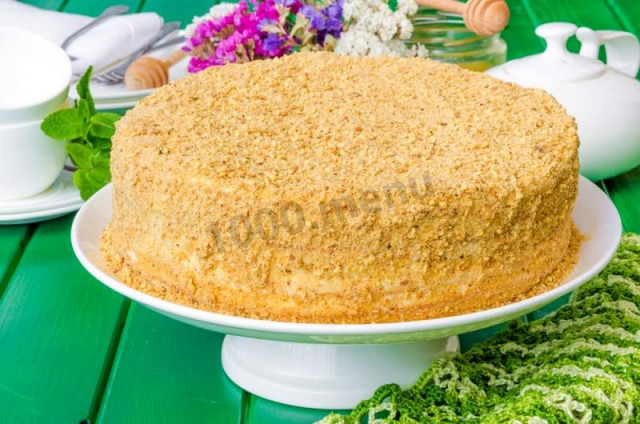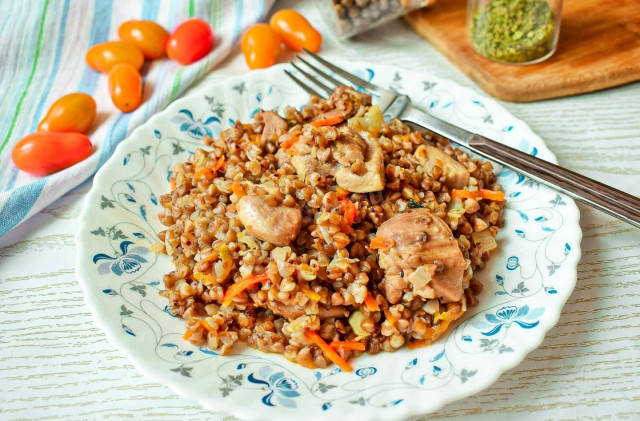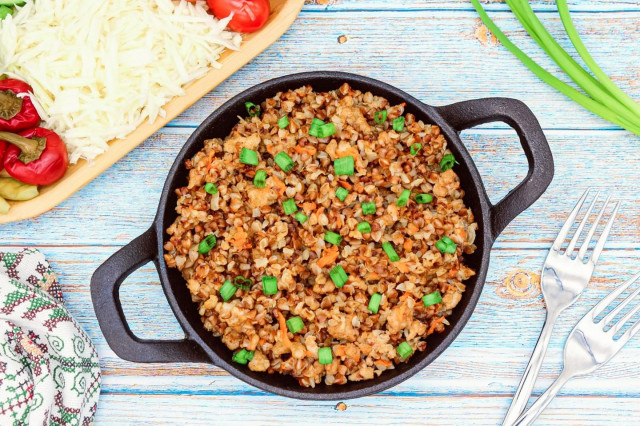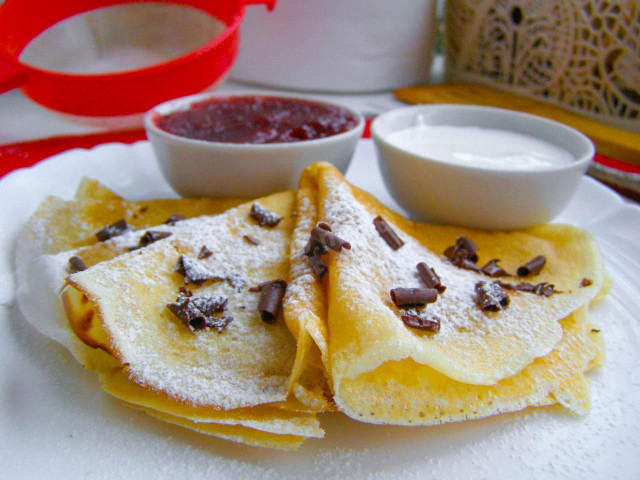Composition / ingredients
Step-by-step cooking
Step 1:
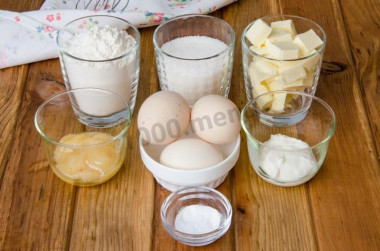
Prepare the dough.
Step 2:
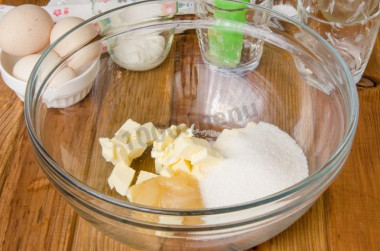
Put butter, honey and sugar in a fireproof bowl or in a saucepan.
Step 3:
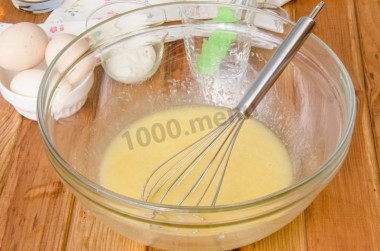
Put the bowl on a steam bath and warm it up until the honey and butter completely melt, and the sugar does not dissolve. It is not necessary to bring the mixture to a boil.
Step 4:

Remove the bowl from the heat and pour in the soda.
Step 5:
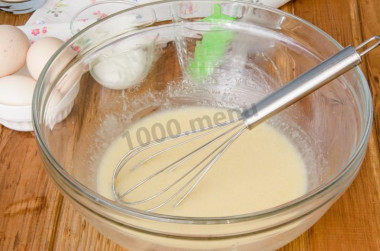
Mix thoroughly and leave for 5 minutes. The mixture should foam slightly.
Step 6:

Add one egg at a time to the honey-sugar mixture. By the way, the mixture should have cooled slightly by this time so that the eggs do not curdle, so be sure to check it by touch.
Step 7:

Mix everything thoroughly until smooth.
Step 8:
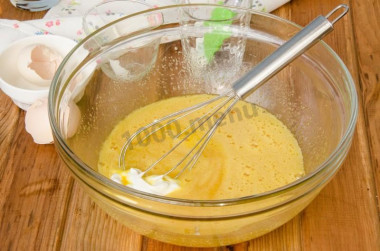
Add sour cream (I took a fat content of 20%) and mix.
Step 9:

Add the sifted flour.
Step 10:
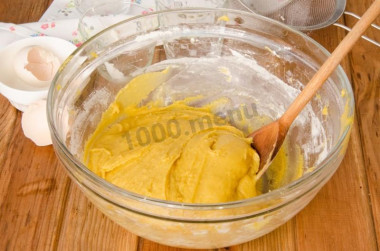
And knead a very soft dough. The dough turns out to be really soft and sticky, so it's better to knead it with a spoon from beginning to end. The dough should be almost fluid, this is important, since it is thanks to the soft dough that the cakes are quite tender!
Step 11:

Therefore, try not to add more flour, but since flour can be very different, focus on the consistency (it is clearly visible in the photo) and, if necessary, add a little flour or, conversely, reduce its amount. The bowl with the dough is covered with a film and sent to the refrigerator for at least a couple of hours.
Step 12:
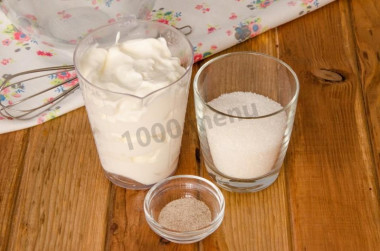
While the dough is cooling, you can prepare the cream.
Step 13:

Put sour cream (the higher the fat content, the better) in a bowl and add sugar and vanilla.
Step 14:
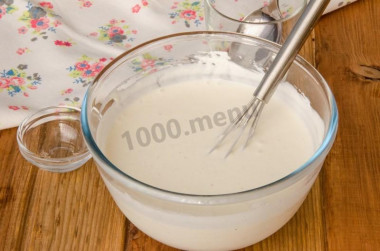
Mix with a whisk until the sugar dissolves. That's all! The cream is ready! Its consistency will depend on the fat content of sour cream, the fatter it is, the thicker the cream will be. If desired, if the cream turned out to be very liquid, then you can add a thickener to it, but do not overdo it, because in order for the cake to soak well, the cream should not be too dense. Therefore, try to find a middle ground. We send the cream to cool down!
Step 15:
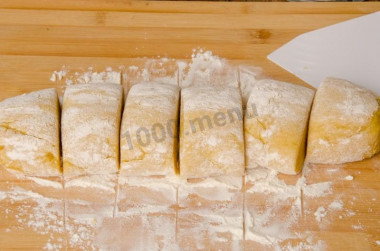
When the dough is well compacted, we take it out of the refrigerator, put it on a work table dusted with flour, roll it into a sausage and divide it into 6 equal parts (this is if you fry cakes in a frying pan with a diameter of 26 cm, if you have a smaller frying pan, then do more parts accordingly).
Step 16:
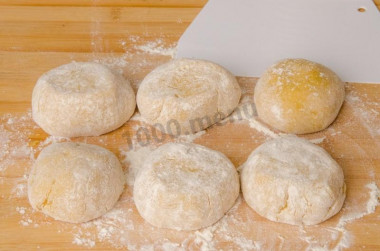
We round each part slightly and leave one ball of dough for ourselves to work with, and transfer the rest to a plate and send it to the refrigerator.
Step 17:
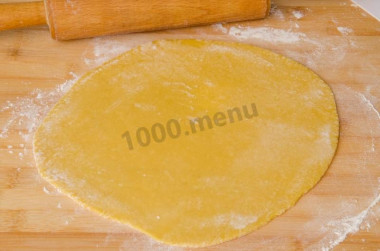
Each ball of dough is rolled into a circle of suitable diameter.
Step 18:

We heat up the frying pan (preferably with a thick bottom so that the cake has time to bake, I have cast iron). We spread the rolled cake on a hot frying pan. By the way, if suddenly the cake is slightly deformed during the transfer, then we correct it immediately in the pan with our hands. Fry the cake on a small fire first on one side until it is ruddy, while the top of the cake should be covered with bubbles and become matte (there will be no traces of raw dough).
Step 19:

Turn the cake with a spatula to the second side and fry it for another minute.
Step 20:

We transfer the finished cake to a flat surface and immediately cut it to the desired size (I used a plate with a diameter of 22 cm).
Step 21:

In this way, fry all the cakes. We collect the trimmings together. I got only 7 cakes with a diameter of 22 cm. Let the cakes cool down.
Step 22:

We pour the trimmings into a dry frying pan and, stirring, lightly dry / fry them. This should be done so that they can be easily crushed into crumbs. When the trimmings are slightly browned and dry, remove from the heat and let cool (I immediately pour them on a wide dish, in this form they cool completely in 5 minutes).
Step 23:
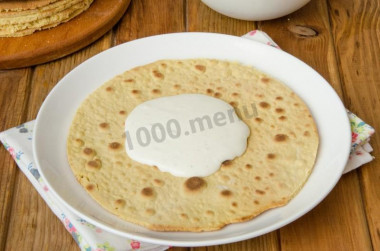
Putting together a honey cake. Each cake is lubricated with a generous portion of cream.
Step 24:

We put the cakes in a tight pile. The top and sides of the cake are also coated with cream.
Step 25:

The cooled scraps are crushed into crumbs.
Step 26:

And sprinkle it on the cake from all sides. We send the honey cake to the refrigerator for 4-5 hours (or longer) for impregnation.
Step 27:

Our honey cake is ready in the pan.
Step 28:

Bon appetit!
Be prepared for the fact that you may need more or less flour than indicated in the recipe. Focus not on the amount of flour, but on the desired consistency of the dough. To avoid mistakes, read about flour and its properties!
It is important to sift the flour to saturate it with oxygen. Then the baking will turn out to be airy and will rise well when baking.
Important! An incorrectly selected frying pan can ruin even the best recipe. All the details on how to choose the perfect frying pan for different dishes read here .
Caloric content of the products possible in the composition of the dish
- Sour cream with 30% fat content - 340 kcal/100g
- Sour cream of 25% fat content - 284 kcal/100g
- Sour cream with 20% fat content - 210 kcal/100g
- Sour cream of 10% fat content - 115 kcal/100g
- Sour cream - 210 kcal/100g
- Chicken egg - 157 kcal/100g
- Egg white - 45 kcal/100g
- Egg powder - 542 kcal/100g
- Egg yolk - 352 kcal/100g
- Ostrich egg - 118 kcal/100g
- Honey - 400 kcal/100g
- Whole durum wheat flour fortified - 333 kcal/100g
- Whole durum wheat flour, universal - 364 kcal/100g
- Flour krupchatka - 348 kcal/100g
- Flour - 325 kcal/100g
- Granulated sugar - 398 kcal/100g
- Sugar - 398 kcal/100g
- Butter 82% - 734 kcal/100g
- Amateur unsalted butter - 709 kcal/100g
- Unsalted peasant butter - 661 kcal/100g
- Peasant salted butter - 652 kcal/100g
- Melted butter - 869 kcal/100g
- Baking soda - 0 kcal/100g
- Vanilla sugar - 379 kcal/100g

